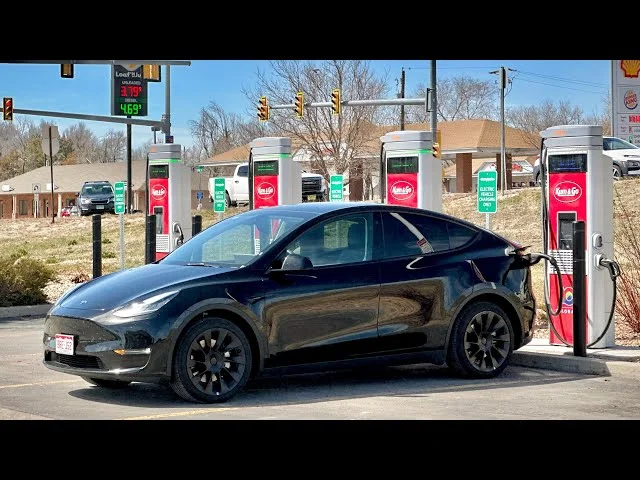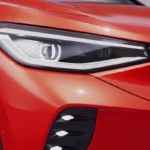Charging Curve Tesla Model Y Long Range And Performance Impact
We're an affiliate
We hope you love the products we recommend! Just so you know, we may collect a share of sales or other compensation from the links on this page. Thank you if you use our links, we really appreciate it!
Table of Contents
Standing out among electric vehicles, the Tesla Model Y Long Range is outstanding not only because of its impressive range and performance but also because sophisticated charging technology. Now, knowing the charge curve allows owners to ensure maximum efficiency in the life of a car’s battery. This article delves into a detailed breakdown of the Tesla Model Y Long Range’s charging curve, exploring how charging speed varies across different states of charge. We will then put this insight into perspective against industry standards and competitor models to give a full overview of where Tesla stands on charging performance. Whether you’re an existing owner or thinking of joining the electric drive ranks, this guide is going to put you in the know on the charging curve Tesla Model Y Long Range.
Detailed Breakdown of the Charging Curve

Initial Ramp-Up (0% to about 20% SOC)
The charging power rises quickly when beginning from a low SOC. For example, a Tesla Model Y with an LFP battery quickly achieved 175 kW, its maximum charging capability, when plugged in at 4% SOC. The battery can absorb the greatest power during this time, enabling the quickest charging rates.
Peak Charging Rate and Early Tapering
The maximum charging rate is usually achieved in the first minute and is rarely sustained for very long. For instance, under actual circumstances, the 175 kW peak rate was only maintained for a limited period before the power started to fall. After charging for two minutes, the power had dropped to about 164 kW.
Mid-Range Charging (20% to around 60% SOC)
The charging rate gradually decreases as the battery gets closer to the mid-range SOC. The charging rate was about 134 kW at about 34% SOC. As the SOC rises, this decrease persists, with the rate falling to about 110 kW at 47% SOC.
Approaching Full Charge (60% to 80% SOC)
The charging power decreases more noticeably at this time. By 61% SOC, the charging rate had dropped to about 82 kW. The tapering continues as the battery fills up, indicating that the system is carefully managing the charge rate to protect battery health.
Final Charging Phase (80% to 100% SOC)
The closer the battery gets to its maximum capacity, the slower the charging rate becomes. When the power intake reaches 80%, it frequently becomes inefficient to charge the device to 100% using a fast charger. Because of the lower power acceptance rate, charging from 80% to 100%, for instance, can take almost as long as charging from 0% to 80%.
Factors Affecting Charging Speeds
Battery Temperature and Preconditioning
Users on Tesla Motors Club often talk about how important battery temperature is to the effectiveness of charging. The slowing down of charging speeds in cold weather is a common problem, and many suggest employing preconditioning features. For instance, a customer reported that while on a winter road trip without preconditioning, the charging rate of their Model Y reduced noticeably, affecting the total amount of time they could travel.
Because of its sophisticated battery management systems, the Tesla Model Y Long Range enables preconditioning to maximize battery temperature before charging. This function helps the battery achieve the appropriate temperature range, enabling faster and more effective charging, which makes it especially helpful in colder locations. When the battery is plugged in, the thermal management system can use grid electricity to warm the battery, preserving the vehicle’s range.
State of Charge (SOC)
People frequently talk about how charging speeds are affected by the status of the charge on Reddit. Several posters point out that when the battery is below 20% SOC, the car charges quickly; as the SOC rises, charging rates decrease. A charging curve graph that demonstrated the abrupt decrease in power supply after reaching around 60% SOC was included in one thread. Peak charging speed for the Tesla Model Y Long Range usually occurs when the SOC is low, less than 20%. The charging rate lowers as the battery fills to save it from overheating and increase battery life. This feature is seen in the charging curve, where fast power intake is permitted in the first phase and then progressively decreases as the SOC rises. This is tightly regulated by Tesla’s internal software, which strikes a balance between battery life and speed.
Charger Type and Availability
On Reddit, users discuss the advantages and disadvantages of various charging networks, such as Tesla’s Supercharger network against third-party alternatives. Many customers praise Tesla’s Superchargers for their dependability and convenience, noting that they may frequently produce greater power outputs than other public chargers, which reduces charging times. High-power DC rapid charging is available via Tesla’s large Supercharger network, which is also accessible to the Model Y Long Range. With peak rates of up to 250 kW, these chargers are tailored for Tesla automobiles. These chargers’ availability and consistency are major benefits, particularly when traveling long distances. They enable quicker charging sessions than many third-party chargers, which may have lower power levels and less dependability.
Charging Infrastructure and Location
Members of Tesla Owners Online talk about how location may affect the quality of the charging infrastructure, which in turn affects charging speeds. Due to local grid restrictions or excessive demand, some users claim that certain Supercharger stations may offer varying power levels, which can lower the amount of power that is available for each car. The local infrastructure at charging stations may have an impact on the Tesla Model Y Long Range’s charging speed. Supercharger stations are intended to offer high-speed charging; however, the actual speed may differ depending on the power capacity of the station and the number of cars charging at the same time. Because of grid limitations, urban superchargers, for instance, could have lower power outputs, which would lengthen the charging time when compared to more remote places with greater power available.
Vehicle Model and Battery Pack Variations
Discussions about how various Tesla models and battery chemistries affect charging speeds are common at Tesla Motors Club. Users note variations in charging curves and thermal management efficiency, for example, when comparing the charging characteristics of the Model Y Long Range (with NCA battery chemistry) to other models, such as the Model 3 Standard Range Plus (with LFP batteries). The Nickel-Cobalt-Aluminum (NCA) battery chemistry used in the Tesla Model Y Long Range provides a strong mix of energy density, lifetime, and charging speed. In comparison to models with alternative battery chemistries, such as LFP (Lithium Iron Phosphate), this chemistry enables the Model Y Long Range to reach better charging rates. Additionally, the NCA battery features a more reliable thermal management technology that aids in maintaining ideal charging speeds across a range of circumstances and guarantees effective energy intake during charging sessions.
Charging Curve Data Analysis

The charging curve for the Tesla Model Y Long Range displayed above shows the power progress used by the state of charge (SOC) of a general lithium-ion battery; a fast rise to a maximum of 175 kW powers shortly after charging begins when the SOC is low, which is less than 4%. Power falls off gradually as the SOC increases, but charging speed takes another huge hit beyond 20% SOC. This is significantly lowered to just about 82 kW at 61% SOC and continues to taper down, closer to full, to be very conservative with battery health.

The above table shows a typical charge curve for the Tesla Model Y Long Range, showing how charging power varies with a rising state of charge in the battery. In simple form, the charging power ramps up very fast to the peak—175 kW—immediately after the initiation when the SOC is less than 4%. Peak power lasts for only a minute before it gradually decreases.
As the state of charge progresses, there is a steadily progressing decrease in charging power; most of it occurs after crossing around 20% SOC. At about 61 percent SOC, the charging power had decreased significantly to about 82 kW. This continues with the trend that the charging rate further goes down as the SOC increases, specifically at 72%, beyond which the intake of power tapers drastically. This pattern reflects the charging strategy in place to protect battery health by slowing down the rate of charge when the battery reaches near full capacity.
Performance Impact of Charging Practices

Performance impacts of diverse charging practices for Tesla Model Y Charging the battery to the optimum temperature enable preconditioning, resulting in the ability of the vehicle to accept higher power levels. Charging to only 80% SOC is a typical practice that saves not only time but also wear on the battery for longer-term health and efficiency. Finally, it avoids high state of charges (SOCs) and therefore maintains the expected longevity of the battery because it reduces the stress during various charging, especially in fast charging conditions.
Practical Tips for Tesla Model Y Owners
One should always attempt to recondition their battery before arriving at a charging station, especially during cold weather. That is how one can charge their car better and faster. For example, driving for about an hour before charging helps warm up the battery even when the outside temperature might be low.
Optimizing Charging Sessions
To do this efficiently, keep in mind that you should charge your car mainly when the state of charge of your car’s battery is low and during non-peak charging hours. The initial phase of charging is the fastest, and the charging pace slows down considerably as the SOC goes higher. Therefore, if you schedule your charges at a lower percentage of the battery’s charge, you’ll be able to gain charge faster as well as save money on the tariffs.
Set charge limits
For everyday use, it is usually advisable to charge the battery up to 80%. With additional time it takes to go above this threshold, notably when using a fast charger, adds more stress to the battery. Setting a lower limit can help keep the battery as healthy as possible and at maximum lifespan.
Keep in mind charging rates and times
Note that the charging rate tapers off as the battery becomes full. For example, charging from 4% to 80% SOC may take about 25 minutes, while that from 80% to 100% could take a comparable period due to the reduced rate. Stopping at approximately 80% is frequently more convenient for time-saving.
Conclusion
Tesla’s Model Y Long Range demonstrates a well-engineered charging curve that balances rapid initial charging with slower rates as the battery nears full capacity. By following best practices like preconditioning and limiting charge levels, owners can enhance both charging efficiency and battery longevity, ensuring a better overall EV experience.
Categorised in: Advice, Automotive





